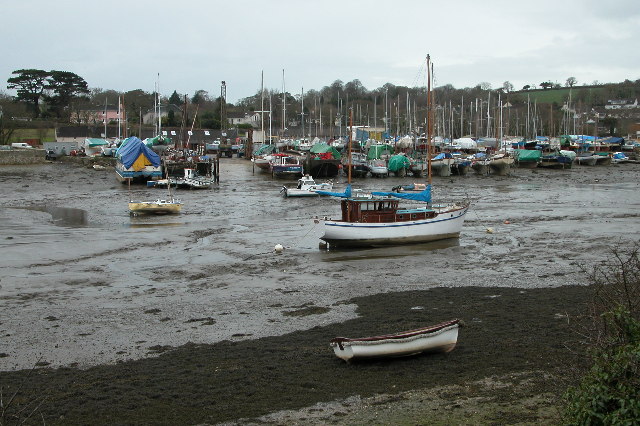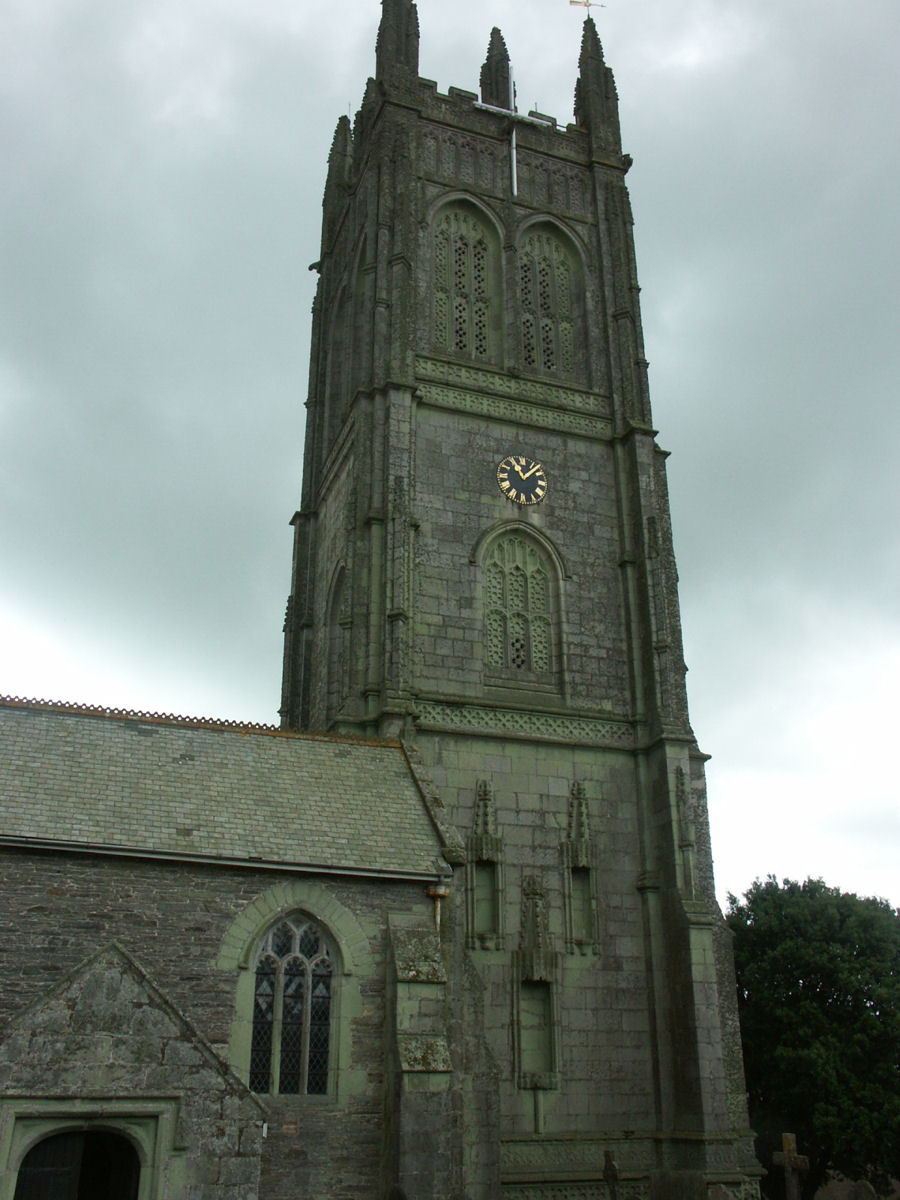|
Mylor, Cornwall
Mylor is a civil parish in Cornwall, England, United Kingdom. It is situated approximately five miles north of Falmouth.Ordnance Survey: Landranger map sheet 204 ''Truro & Falmouth'' The church town of the ecclesiastical parish is Mylor Churchtown: however, Mylor Bridge is the largest village in the parish.GENUKI website Mylor. Retrieved April 2010 Other settlements include Angarrick, , and |
Mylor Creek At Low Tide - Geograph
Mylor may refer to: * Mylor, Cornwall, a civil parish in Cornwall ** Mylor Bridge, a village in Mylor parish ** Mylor Churchtown, in Mylor parish ** Mylor Creek, a tidal creek in Mylor parish * Mylor, South Australia Mylor (postcode 5153) is a small village in the Adelaide Hills. History Mylor was surveyed in 1885, with a plan to develop the land as a focal point for orchard development in South Australia. The town was proclaimed in 1891 by Acting Governor ..., a town and locality in Australia * Saint Mylor, correctly known as Saint Melor {{disambig ... [...More Info...] [...Related Items...] OR: [Wikipedia] [Google] [Baidu] |
Archdeaconry Of Cornwall
The Archdeacon of Cornwall is a senior cleric in the Church of England Diocese of Truro. History and composition The archdeaconry of Cornwall was created in the Diocese of Exeter in the late 11th century. The area and the archdeacon remained part of that diocese until 15 December 1876 when the Diocese of Truro was established. The archdeaconry was then divided on 21 May 1878 to create the new Archdeaconry of Bodmin. Today, the archdeaconry of Cornwall consists of the deaneries of Carnmarth North, Carnmarth South, Kerrier, Penwith, Powder, Pydar and St Austell (Powder deanery includes the Isles of Scilly). List of archdeacons High Medieval *?–1086–?: Roland *?–13 June 1098 (d.): Alnothus *bef. 1110–aft. 1110: Ernaldus *bef. –aft. : Hugo de Auco *bef. –aft. : William *bef. –aft. : A. *aft. –30 April 1157 (d.): Walter *aft. 1161–bef. 1171: Ralph Luce *?–7 September 1171 (d.): Peter *bef. –aft. : Galterus *bef. 1191–aft. 1186: Walter Fitz Rogo *bef. ... [...More Info...] [...Related Items...] OR: [Wikipedia] [Google] [Baidu] |
Melorus
Melor (also known in Latin as Melorius; in Cornish as Mylor; in French as Méloir; and other variations) was a 10th-century Breton saint who, in England, was venerated in Cornwall and at Amesbury Abbey, Wiltshire, which claimed some of his relics. Identity Melor had a popular cult in Brittany, but his story has been obfuscated by a number of biographers who confused names, dates and places to the point where reality has been almost completely obscured. There actually appear to have been at least three, if not four, saints of this or similar name: *Prince Melor of Cornouaille *Saint Mylor of Cornwall *Saint Meglar of Cornwall *Bishop Melor of Redon The first and second individuals are generally believed to be the same, and the Melor commonly identified as the Amesbury saint. Breton legend Melor's legend makes him a prince who was only seven when his uncle, Rivod, murdered his father, St Miliau or Milio. Riwal wished the child's death also, but was dissuaded from carrying out ... [...More Info...] [...Related Items...] OR: [Wikipedia] [Google] [Baidu] |
Probus, Cornwall
Probus ('' Cornish: Lannbrobus'') is a civil parish and village in Cornwall, England, in the United Kingdom. It has the tallest church tower in Cornwall. The tower is high, and richly decorated with carvings. The place name originates from the church's dedication to Saint Probus. The parish population at the 2011 census was 2,299, whereas the ward population taken at the same census was 3,953. History There was a monastery here before the Norman Conquest which continued to exist until the reign of Henry I. King Henry gave the church of Probus to Exeter Cathedral and the clergy of Probus thereafter were a dean and five canons (the deanery was abolished in 1268 and the canonries in 1549). The first vicar was instituted in 1312; the parish had dependent chapelries at Cornelly and Merther. The church was built mainly in the 15th century but the tower was still under construction in 1523. In the church is the brass of John Wulvedon and his wife, 1512. In the early years of the 19th ce ... [...More Info...] [...Related Items...] OR: [Wikipedia] [Google] [Baidu] |
Glasney College
Glasney College ( kw, Kolji Glasneth) was founded in 1265 at Penryn, Cornwall, by Bishop Bronescombe and was a centre of ecclesiastical power in medieval Cornwall and probably the best known and most important of Cornwall's religious institutions. History The site at Glasney was at the head of a small creek. Much of the building was modelled on Exeter Cathedral, and as a defence Bishop Bronescombe built three towers, forming one block that acted as a defence both for the college and for the town of Penryn. After its founding in 1265, during the later Middle Ages, Glasney was the largest clerical body in Cornwall, as large as any of the ancient monasteries had been, and with an equivalent income, mainly derived from the rectorial tithes of Budock, Colan, Feock, Kea, Manaccan, Mevagissey, Mylor, St Allen, St Enoder, St Gluvias, St Goran, St Just in Penwith, Sithney, and Zennor. Whetter, James (1988) The History of Glasney College' There were no monks at this ... [...More Info...] [...Related Items...] OR: [Wikipedia] [Google] [Baidu] |
Peter Quinel
Peter Quinel () was a medieval Bishop of Exeter. He became a canon of Exeter Cathedral in 1276 and his episcopate began in 1280 and continued until he died in 1291. He issued a set of rules governing the clergy in his diocese and the required furnishing of churches and continued the rebuilding efforts at Exeter Cathedral. Life Quinel was born about 1230, to Peter Quinel and his wife Helewis. He may have been educated at a university, because in 1262 he was given the title of master, which implies a university education. Quinel had the office of archdeacon of St David's in 1263, and later became a canon of Exeter Cathedral in 1276.Orme "Quinil, Peter" ''Oxford Dictionary of National Biography'' Quinel was elected between 7 August and 7 October 1280 and consecrated on 10 November 1280. His consecration took place at Canterbury Cathedral and was performed by Richard of Gravesend who was Bishop of London A bishop is an ordained clergy member who is entrusted with a position of ... [...More Info...] [...Related Items...] OR: [Wikipedia] [Google] [Baidu] |
Edmund, 2nd Earl Of Cornwall
Edmund of Almain (26 December 1249 – 1300) was the second Earl of Cornwall of the fourth creation from 1272. He joined the Ninth Crusade in 1271, but never made it to the Holy Land. He was the regent of the Kingdom of England from 1286 to 1289 and the High Sheriff of Cornwall from 1289 to 1300. Early life Edmund was born at Berkhamsted Castle on 26 December 1249 and was the son of the king's brother, Richard, 1st Earl of Cornwall, and his second wife Sanchia of Provence, daughter of Ramon Berenguer, Count of Provence, and sister of Henry III's queen, Eleanor. Thus a paternal uncle (with a maternal aunt as consort) sat on the throne, followed by their eldest son from 1272 until Edmund's death. He was baptised by his mother's uncle, Boniface of Savoy, Archbishop of Canterbury, and was named Edmund in honour of Saint Edmund of Abingdon, Boniface's predecessor as archbishop. In 1257, Edmund joined his parents on their first visit to Germany, to pursue Richard's nominal or c ... [...More Info...] [...Related Items...] OR: [Wikipedia] [Google] [Baidu] |
Walter Branscombe
Walter Branscombe (–1280) was Bishop of Exeter from 1258 to 1280. Origins Nothing for certain is known of Walter Branscombe's origins and education, but he is thought to have been born in Exeter in about 1220. In the opinion of William George Hoskins he was a member of the family of ''de Branscombe'' seated at the manor of Edge in the parish of Branscombe east Devon, situated about 16 miles east of Exeter;Hoskins ''Devon'' pp. 344-345 although others appear to dispute this. John Prince (1643-1723), in his ''Worthies of Devon'', says he was a native of Exeter, and "born there of poor and mean parentage". Prince appears to be quoting an earlier authority, Bishop Francis Godwin (1562-1633), who writes of Walter Bronscombe:"''Patre natus Exoniensi cive, sed tenuissimae sortis et ex plebe infimâ''", and it is not clear that the Branscombe family, who filled various positions of responsibility and authority in the fourteenth century, married into the high Devonshire families of ... [...More Info...] [...Related Items...] OR: [Wikipedia] [Google] [Baidu] |
Mabe, Cornwall
Mabe (variant: ''La Vabe'', kw, Lannvab) is a village and civil parish in Cornwall, England, United Kingdom. The village is situated one mile (1.6 km) west of Penryn. Mabe parish is bounded by Stithians and Ponsanooth to the north, Budock to the east, Mawnan and Constantine to the south and Wendron to the west. Mabe parish is twinned with the Breton town of Primelin. Mabe parish population was 2,083 at the 2011 census, whereas the ward population covering a larger area was 5,802 The parish lies at the eastern edge of the Carnmenellis Granite intrusion. It is surrounded by several working and closed quarries. The Argal and College reservoirs lie to the south of the village. The settlement of Mabe Burnthouse is situated on a hill overlooking Penryn and to the southwest is the location of the parish church, the Church of Saint Laud, which is dedicated to Saint Laudus, Bishop of Coutances. History Mabe was located in the Deanery of Carnmarth and belonged to the hund ... [...More Info...] [...Related Items...] OR: [Wikipedia] [Google] [Baidu] |
Penryn, Cornwall
Penryn (; kw, Pennrynn, meaning 'promontory') is a civil parish and town in west Cornwall, England, United Kingdom. It is on the Penryn River about northwest of Falmouth. The population was 7,166 in the 2001 census and had been reduced to 6,812 in the 2011 census, a drop of more than 300 people across the ten-year time gap. There are two electoral wards covering Penryn: 'Penryn East and Mylor' and 'Penryn West'. The total population of both wards in the 2011 census was 9,790. Though now the town is overshadowed by the larger nearby town of Falmouth, Penryn was once an important harbour in its own right, lading granite and tin to be shipped to other parts of the country and world during the medieval period. History Early history The ancient town first appears in the Domesday Book under the name of "Trelivel", and was since founded and named Penryn in 1216 by the Bishop of Exeter. The borough was enfranchised and its Charter of Incorporation was made in 1236. The con ... [...More Info...] [...Related Items...] OR: [Wikipedia] [Google] [Baidu] |
Devon And Cornwall Police
Devon and Cornwall Police is the territorial police force responsible for policing the ceremonial counties of Devon and Cornwall (including the Isles of Scilly) in England. The force serves approximately 1.8 million people over an area of . History The force was formed on 1 April 1967, by the amalgamation of the Devon and Exeter Police, Cornwall County Constabulary and Plymouth City Police. These three constabularies were in turn amalgamations of 23 city and borough police forces that were absorbed between 1856 and 1947. Between 1856 and 1947, police in Devon and Cornwall used a number of different names. They were gradually absorbed into two of the existing forces called Devon and Exeter Constabulary and Cornwall County Constabulary, except Plymouth City Police which remained separate. In 1967 the three remaining forces were amalgamated into one called Devon and Cornwall Constabulary or Devon and Cornwall Police. Chief constables *19671973 Colonel Ronald Berry Greenwood * ... [...More Info...] [...Related Items...] OR: [Wikipedia] [Google] [Baidu] |



_(14586687677).jpg)
.jpg)

.jpg)